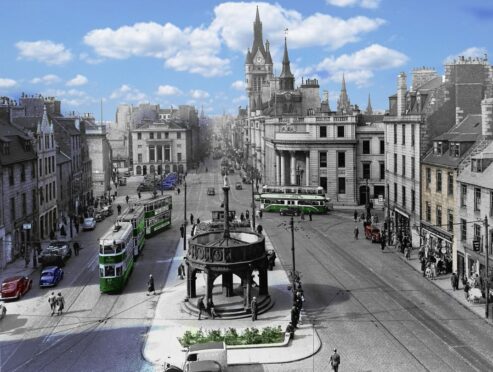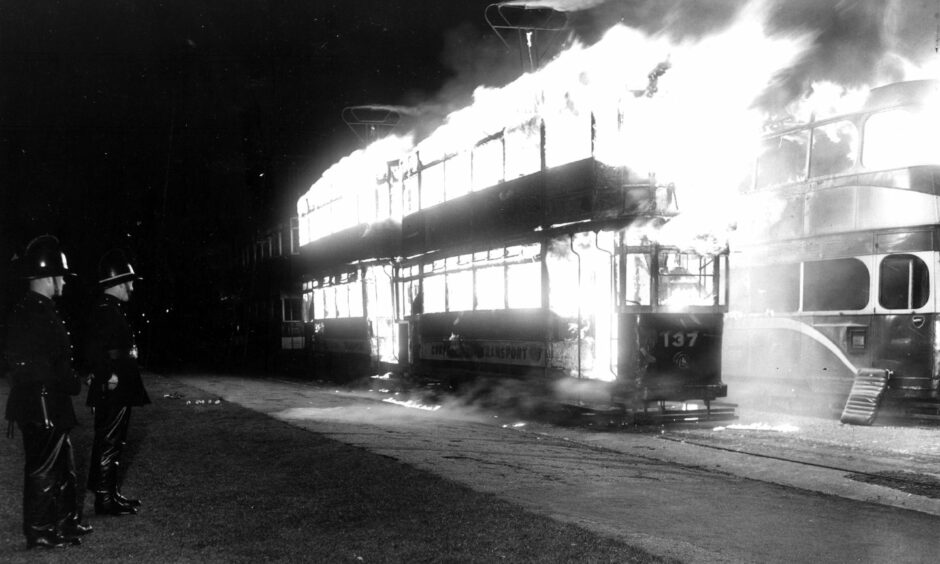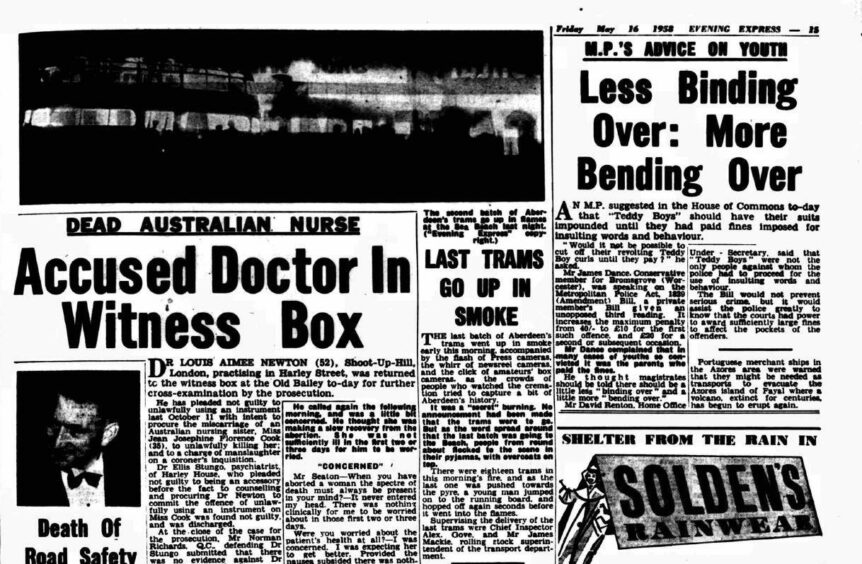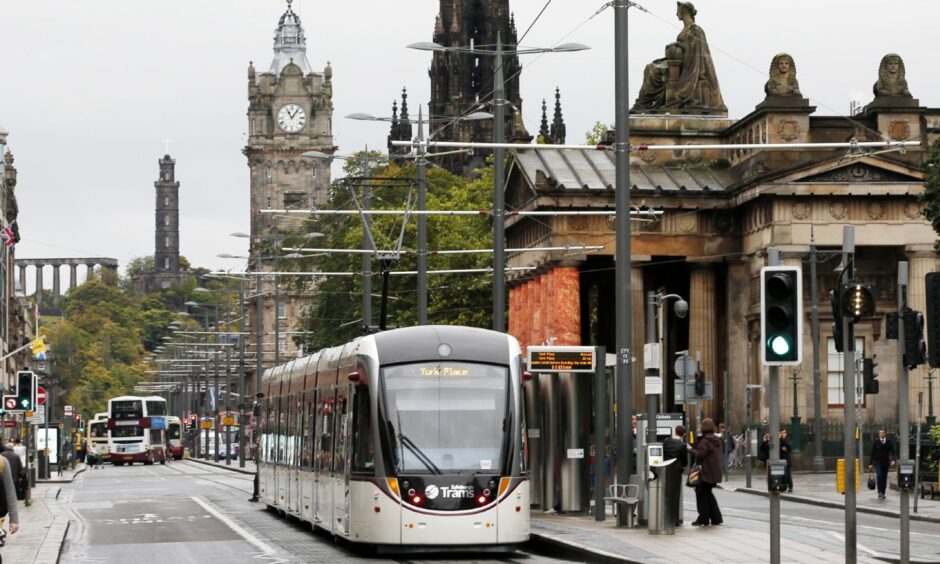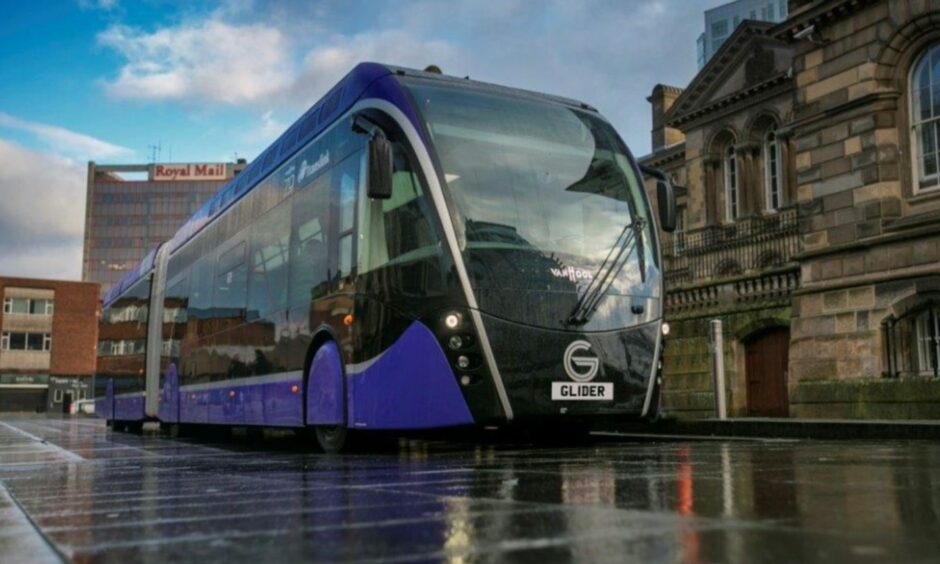The last batch of Aberdeen’s trams went up in smoke early one May morning in 1958, accompanied by the flash of press cameras, the whirr of newsreel cameras and the click of amateurs’ box cameras, as the crowds of people who watched the cremation tried to capture a bit of Aberdeen’s history.
It was a “secret” burning. No announcement had been made that the trams were to go.
But as the word spread around that the last batch was going to the beach, people from round about flocked to the scene in their pyjamas, with overcoats on top.
Fast forward from prose of The Evening Express in 1958 to the modern day, more than 60 years on from that Viking burial as described above by our night watchman reporter, and the wheels could be in motion to reintroduce trams to the city’s streets.
Councillor Marie Boulton – charged with overseeing the huge masterplan work and the administration’s capital convener – is entertaining the idea long term, though made it clear it was not something planners were looking at “immediately”.
Possible routes could include a tram or light rail service running between Aberdeen University at King’s College and Robert Gordon University in south of the city, at Garthdee.
‘Shock and horror!’: Aberdeen trams a hard sell after Edinburgh fiasco, admits Boulton
Tram has become something of a dirty word in Scotland since the fiasco in Edinburgh, a shortened line through the capital which cost in excess of £400 million more than estimated.
Originally hoped to open in 2011, it was not until 2014 that passengers were able to use the new transport system.
Such strain was put on the public purse by the project, that a government minister even blamed the overspend for a failure to properly maintain Highland roads.
A public inquiry, led by Lord Hardie, has now more spent nearly £12m investigating how a row with contractors came to double the price – with no report yet published two years since all the evidence was gathered.
Despite the furore, Mrs Boulton believes Aberdeen needs to be “really brave”.
“If anyone hears the word ‘tram’ they all take a sharp intake of breath – shock and horror!” she told us.
“As we move forward, and this is not something we are looking at immediately, if we are trying to capture people’s imagination in using alternative forms of travel, we have to look at mass transport.
“It would actually be quite good as it could be used to join up both university by light rail or tram, call it what you want.
“We should not be afraid of the idea as technology has advanced hugely since the Edinburgh tram fiasco and we should not allow ourselves to be frightened of being innovative. We will wait and see.”
It comes as Scottish cities race to prove their green credentials – something Aberdeen City Council has looked to set out with a move away from economic reliance on oil and gas.
Ahead of hosting Cop26 at the end of the month, Glasgow’s council leader has teased plans for an extension of the city’s metro system, amid a number of other green transport initiatives.
Could Aberdeen trams be part of a reimagined city centre?
Last week, we revealed designs for the city drawn up by Aberdeen’s future architects, studying at RGU, which also called for trams to be reconsidered.
Aberdeen’s Labour politicians first reignited discussion on trams in 2013, but they have since been assessed as being too expensive to introduce.
Take a look through our archive photos of the Aberdeen tram system, which was integral to getting around the Granite City:
It comes amid a huge redesign of the city centre, backed by £150m from the council – with pedestrianisation of part of Union Street among options being considered.
However, masterplan lead Mrs Boulton previously admitted aspirations to completely block off the stretch between Bridge Street and Market Street to all traffic might prove difficult – given the lack of parallel roads offering alternatives for buses.
The refresh of the blueprint which has brought about the revamp of Union Terrace Gardens (UTG), Provost Skene’s House, Marischal Square and the art gallery will this time also include the beach.
Already we have heard about near £75m plans for a new food and drink market on the former British Home Stores site in Union Street, a potential replacement for Pittodrie stadium at the beach and reopening the Castlegate to buses.
Tram-like buses could send thoughts of an return of railed predecessors up in smoke
Regional transport body Nestrans is already working on an Aberdeen Rapid Transit (ART) project, using road vehicles similar to those running on Belfast’s ‘Glider’ service.
The ‘tram-like’ buses could connect Aberdeen airport in the north, Portlethen to the south, Bridge of Don and Westhill.
SNP operations spokesman on the council, Alex McLellan branded tram-talk “desperate and back-of-a-fag-packet”.
He said: “The Regional Transport Strategy 2040 talks about a tram-like rapid transit system but it goes out of its way to mention that actual trams would be inflexible and much more expensive to deliver.
“That’s why we’ve proceeded with an on-road model and why we’ve been able to get a the Scottish Government’s Bus Partnership Fund to pay for the outline business case. As long as it remains a bus there’s a strong chance of us getting more funding too.
“I can’t fathom why the administration seem to be giving up on the new Regional Transport Strategy after years of work and as it’s on the cusp of getting its final sign-off. Why are we hearing plans now for something that would cost more, attract less external funding, and not even be the best option?”
Mrs Boulton highlighted the drawback of ART scheme would be a continued use of roads, not freeing up any space.
But for Aberdeen trams to be brought from the ashes – however far off in the future – would likely require huge sums from the government on top of the funding for the ART.
“There are lots of different elements that need to come together to make it all work and it is not all within the gift of the council,” Mrs Boulton said.
“We are looking at greening up the city a lot more and all of this has to be a matter of course, not an afterthought.”
How the last tram from Torry sparked the bonfire of Aberdeen’s entire fleet
